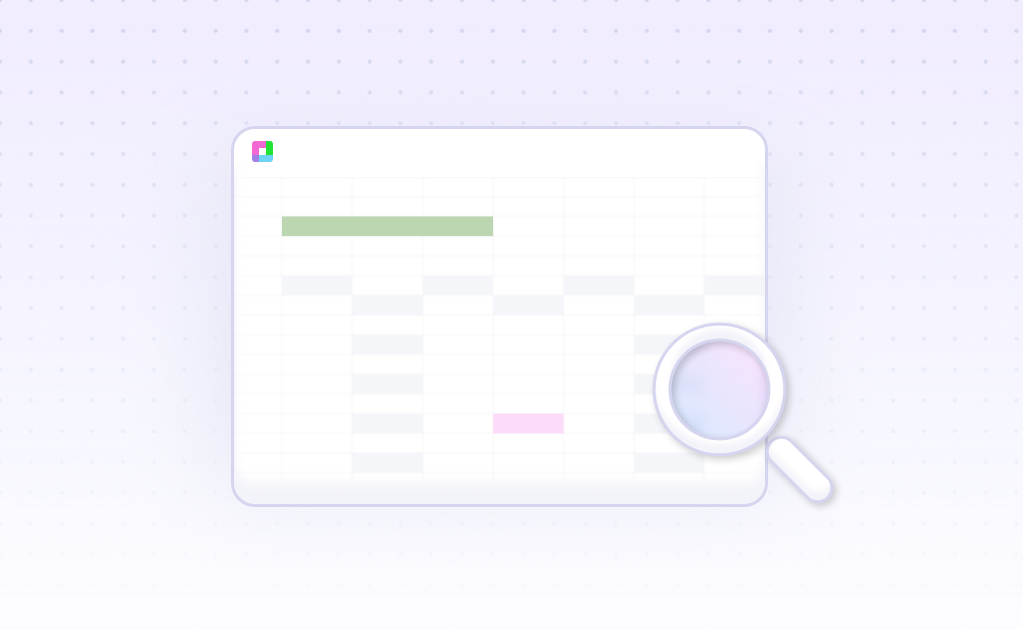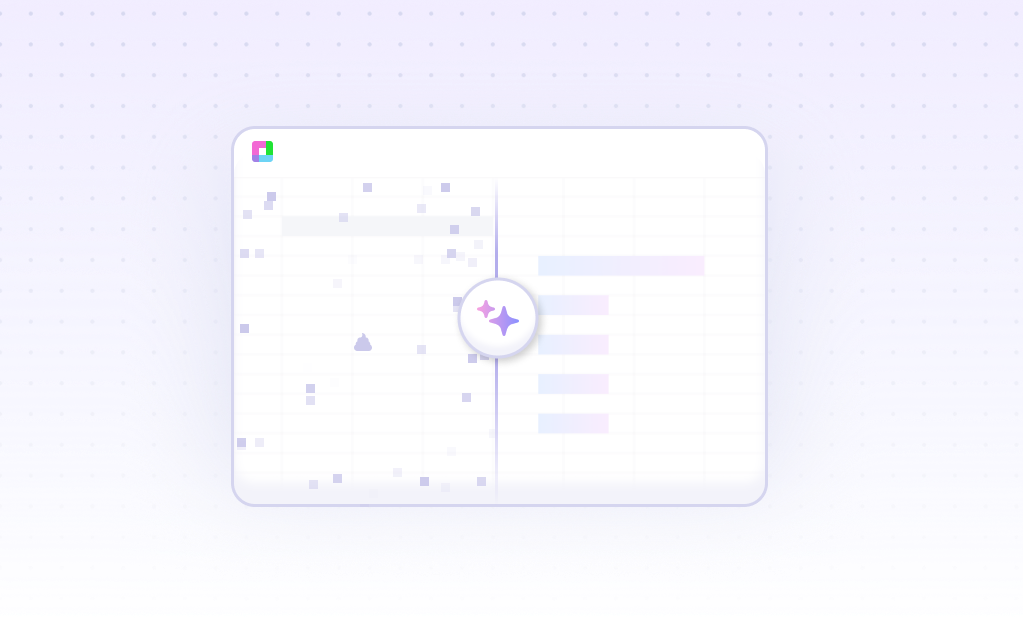
Picture this: You're analyzing clinical trial data where patients can experience multiple types of events—recovery, relapse, or death. Traditional survival analysis falls short because it can't handle these competing risks where one outcome prevents others from occurring. That's where competing risks analysis becomes your statistical superhero.
With Sourcetable's AI-powered platform, you can perform sophisticated competing risks modeling without wrestling with complex statistical software. Our intuitive interface makes it simple to analyze survival data with multiple endpoints, calculate cumulative incidence functions, and interpret results—all while maintaining the flexibility of a spreadsheet.
Understanding Competing Risks Analysis
Competing risks analysis is a statistical method used when subjects can experience one of several mutually exclusive events. Think of it as analyzing a race where multiple finish lines exist, but crossing one prevents you from reaching the others.
Unlike standard survival analysis that focuses on time to a single event, competing risks analysis considers:
- Multiple event types: Different outcomes that can occur
- Mutual exclusivity: Experiencing one event prevents others
- Censoring: Subjects who don't experience any event during follow-up
- Time-to-event: When each type of event occurs
This approach provides more nuanced insights than traditional methods, especially in medical research, reliability engineering, and risk assessment where multiple competing outcomes are common.
Why Choose Sourcetable for Competing Risks Analysis
Discover the key benefits
AI-Powered Model Building
Let AI guide your competing risks model specification, covariate selection, and assumption testing. Get expert-level statistical modeling without years of training.
Interactive Visualizations
Generate compelling cumulative incidence plots, hazard ratio visualizations, and model diagnostics with natural language commands.
Seamless Data Integration
Import survival data from clinical databases, research repositories, or Excel files. Our platform handles data preparation and validation automatically.
Collaborative Analysis
Share your competing risks models with research teams, stakeholders, and reviewers. Real-time collaboration keeps everyone aligned on methodology and results.
Regulatory Compliance
Generate analysis reports that meet regulatory standards for clinical research, with complete audit trails and reproducible methodology.
No Coding Required
Perform sophisticated statistical modeling through natural language queries and intuitive spreadsheet operations. Focus on insights, not syntax.
Common Applications of Competing Risks Analysis
Discover how professionals across industries use competing risks analysis to solve complex problems:
Clinical Research
Analyze patient outcomes in oncology trials where patients may experience disease progression, death from other causes, or treatment-related complications. Model competing endpoints to inform treatment decisions.
Reliability Engineering
Study component failure modes in manufacturing systems where parts can fail due to wear, corrosion, or catastrophic events. Optimize maintenance schedules based on competing failure risks.
Financial Risk Assessment
Model credit defaults where borrowers may default due to unemployment, illness, or economic downturns. Assess portfolio risk with multiple competing scenarios.
Epidemiological Studies
Investigate disease outcomes in population health studies where subjects may experience the disease of interest, competing diseases, or death from other causes.
Customer Behavior Analysis
Analyze customer churn patterns where customers may leave due to pricing, service issues, or competitor offerings. Develop targeted retention strategies.
Environmental Research
Study species survival with multiple mortality causes like predation, disease, or habitat loss. Inform conservation strategies with competing risk insights.
Competing Risks Analysis in Sourcetable
Follow these steps to perform professional competing risks analysis:
Import Your Survival Data
Upload datasets with subject IDs, event times, event types, and covariates. Sourcetable automatically validates data structure and identifies potential issues.
Specify Your Model
Use natural language to define your competing risks model: 'Analyze time to death or relapse with age, treatment, and stage as covariates.' AI handles the technical specification.
Explore Data Patterns
Generate descriptive statistics and preliminary visualizations. Examine event rates, censoring patterns, and covariate distributions across competing risk groups.
Fit Competing Risks Models
Sourcetable fits Fine-Gray subdistribution hazard models, cause-specific hazard models, or both. Compare model performance and assumption validity automatically.
Calculate Key Metrics
Compute cumulative incidence functions, subdistribution hazard ratios, and confidence intervals. Get intuitive interpretations of all statistical measures.
Generate Visualizations
Create publication-ready plots showing cumulative incidence curves, hazard ratio forest plots, and model diagnostic charts. Customize colors, labels, and themes.
Interpret Results
Receive AI-powered interpretation of your competing risks analysis. Understand what hazard ratios mean, identify significant predictors, and assess model fit.
Export and Share
Generate comprehensive reports with methodology, results, and visualizations. Export to PDF, Word, or presentation formats for stakeholder communication.
Competing Risks Analysis Examples
Example 1: Clinical Trial Analysis
A pharmaceutical company is analyzing a cancer treatment trial where patients can experience three competing outcomes: disease progression, death from treatment toxicity, or death from other causes. The traditional approach of analyzing each endpoint separately would overestimate the probability of any single event.
Using Sourcetable's competing risks analysis:
- Data setup: Import patient data with time-to-event, event type, and baseline characteristics
- Model specification: 'Analyze competing risks of progression, toxicity death, and other death with age and treatment as predictors'
- Key findings: Treatment reduces progression risk (HR=0.65, p=0.02) but increases toxicity risk (HR=1.8, p=0.04)
- Clinical insight: Cumulative incidence plots show net benefit of treatment despite increased toxicity
Example 2: Equipment Reliability Study
A manufacturing company needs to analyze pump failures in their facility. Pumps can fail due to mechanical wear, electrical issues, or external damage. Understanding these competing failure modes helps optimize maintenance strategies.
The analysis reveals:
- Mechanical wear: Dominant failure mode after 18 months of operation
- Electrical issues: More common in pumps with high usage patterns
- External damage: Random events requiring different preventive measures
- Maintenance optimization: Develop targeted interventions for each failure mode
Example 3: Customer Churn Analysis
A subscription service wants to understand why customers cancel. Customers may leave due to pricing concerns, service quality issues, or competitor offerings. Each reason requires different retention strategies.
The competing risks analysis shows:
- Price sensitivity: Highest risk factor for budget-conscious segments
- Service quality: Major driver for premium customers
- Competition: Affects all segments but varies by product features
- Retention strategy: Segment-specific interventions based on dominant risk patterns
Statistical Methods and Implementation
Sourcetable implements industry-standard competing risks methods with modern computational efficiency:
Fine-Gray Subdistribution Hazard Model
The subdistribution hazard model directly models the cumulative incidence function for each competing risk. This approach is particularly useful when you want to understand the absolute risk of experiencing a specific event type in the presence of competing risks.
Key features:
- Models cumulative incidence directly
- Handles competing risks naturally
- Provides intuitive hazard ratio interpretations
- Suitable for prediction and risk assessment
Cause-Specific Hazard Models
Cause-specific models analyze the instantaneous risk of each event type among subjects still at risk. This approach is valuable for understanding the biological or mechanistic processes underlying each competing risk.
Benefits include:
- Clear biological interpretation
- Familiar Cox regression framework
- Separate models for each competing risk
- Useful for mechanistic understanding
Model Validation and Diagnostics
Sourcetable automatically performs comprehensive model validation:
- Proportional hazards testing: Schoenfeld residuals and time-interaction tests
- Model fit assessment: Concordance statistics and calibration plots
- Assumption checking: Linearity, proportionality, and independence tests
- Cross-validation: Out-of-sample prediction performance
Competing Risks Analysis FAQ
What's the difference between competing risks analysis and standard survival analysis?
Standard survival analysis focuses on time to a single event, treating other events as censoring. Competing risks analysis explicitly models multiple mutually exclusive events, providing more accurate probability estimates when subjects can experience different types of outcomes.
When should I use Fine-Gray vs. cause-specific hazard models?
Use Fine-Gray models when you want to predict absolute risk and understand cumulative incidence in the presence of competing risks. Use cause-specific models when you want to understand the biological mechanisms or instantaneous risk of each event type separately.
How does Sourcetable handle censoring in competing risks analysis?
Sourcetable automatically handles right censoring, left truncation, and interval censoring. The platform validates censoring patterns and provides diagnostic tools to assess the impact of censoring on your results.
Can I include time-varying covariates in my competing risks model?
Yes, Sourcetable supports time-varying covariates in both Fine-Gray and cause-specific hazard models. Simply specify your time-dependent variables, and the platform handles the complex data restructuring automatically.
How do I interpret subdistribution hazard ratios?
Subdistribution hazard ratios represent the relative risk of experiencing a specific event while accounting for competing risks. A hazard ratio of 1.5 means the risk of that specific event is 50% higher, considering that competing events prevent its occurrence.
What sample size do I need for competing risks analysis?
Sample size depends on event rates, number of competing risks, and desired statistical power. Sourcetable provides power calculation tools and guidance for sample size planning based on your specific study design and expected effect sizes.
Can I perform competing risks analysis with more than two event types?
Absolutely. Sourcetable handles any number of competing event types. The platform automatically adjusts model complexity and provides clear visualizations even with many competing risks.
How does Sourcetable validate competing risks model assumptions?
Sourcetable performs comprehensive assumption testing including proportional hazards tests, linearity assessments, and independence checks. The platform provides diagnostic plots and statistical tests with clear interpretations of assumption violations.
Frequently Asked Questions
If your question is not covered here, you can contact our team.
Contact Us




